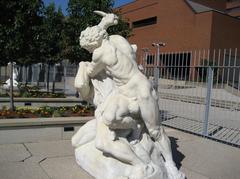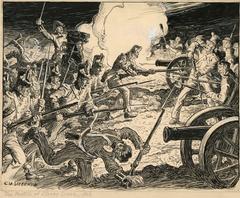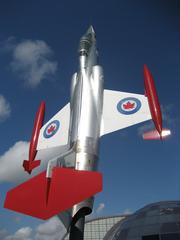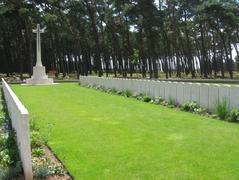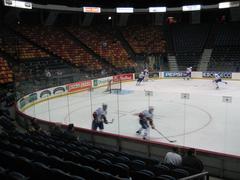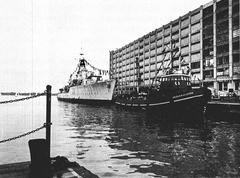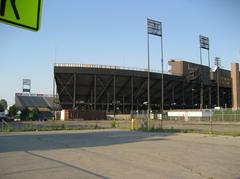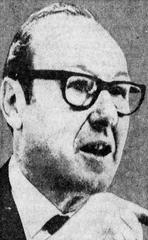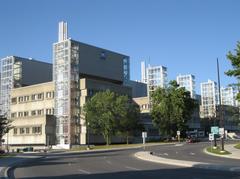Barton Street Arena: Visiting Hours, Tickets, and Historical Significance in Hamilton, Canada
Date: 04/07/2025
Introduction
The Barton Street Arena, historically known as the Hamilton Forum, was once one of Ontario’s most prominent indoor sports venues. Built in 1910 and opened in 1911, this iconic arena stood at Barton Street East and Sanford Avenue North in Hamilton, Ontario. With a seating capacity of approximately 4,500 and the largest ice surface in the National Hockey League (NHL) during its era, the arena played a central role in Hamilton’s sporting and cultural heritage (retroseasons.com; The Hamilton Spectator).
Although demolished in 1977, the Barton Street Arena’s legacy endures through the vibrant Barton Village neighborhood, ongoing community events, and heritage initiatives. This article explores the historical importance of the arena, offers practical information for visitors interested in the site and nearby attractions, and highlights how Hamilton continues to honor its rich sporting past.
Table of Contents
- Barton Street Arena: A Glance at History
- Sporting and Cultural Legacy
- Barton Village Today: Exploring the Neighborhood
- Visiting the Former Arena Site
- Frequently Asked Questions (FAQ)
- Visuals and Further Resources
- Related Historical Sites in Hamilton
- Summary and How to Stay Updated
- References
Barton Street Arena: A Glance at History
The Barton Street Arena, later renamed the Hamilton Forum, was constructed to serve Hamilton’s growing demand for indoor sports, especially hockey. As the proud home of the NHL’s Hamilton Tigers (1920–1925), and later teams like the Hamilton Red Wings, Tiger Cubs, and Fincups, the arena was a site of major sporting milestones.
Its architectural features included a distinctive wooden frame, barrel-vaulted roof, and a 200-by-80-foot ice surface—the largest in the NHL at the time. The arena’s design offered six main entrances, five dressing rooms, press facilities, and amenities such as a coat-check, ladies’ washroom, and a smoking room, making it a state-of-the-art venue for its era (retroseasons.com).
Beyond hockey, Barton Street Arena hosted figure skating, boxing, wrestling, concerts, political rallies, and community gatherings, cementing its status as a social hub for Hamilton’s working-class neighborhoods (The Hamilton Spectator).
By the 1970s, aging infrastructure and the rise of modern venues like FirstOntario Centre led to its closure and eventual demolition in 1977. Today, the legacy of Barton Street Arena is celebrated through local heritage preservation and community initiatives.
Sporting and Cultural Legacy
NHL and Junior Hockey
As home to the Hamilton Tigers, the arena marked Hamilton’s entry into the NHL. Its impressive ice surface drew praise from visiting teams and officials. Montreal Canadiens owner George Kennedy once remarked: “This is a fine arena. It’s a lot better than I looked for… The lighting is excellent, the seating fine, and the ice surface the largest in the NHL” (retroseasons.com).
After the Tigers left, the arena continued to shape Hamilton’s hockey culture. It hosted the first game of the 1962 Memorial Cup, where the Hamilton Red Wings defeated the Edmonton Oil Kings 5–2, underscoring the venue’s importance in Canadian hockey history.
Community Gathering Place
The Barton Street Arena’s role extended beyond sports. Its central location on Barton Street, a historic corridor lined with shops and entertainment venues, made it a democratic space that welcomed all community members. With a capacity for 4,500 seated and 500 standing spectators, it was a bustling venue for concerts, rallies, and social events.
Barton Village Today: Exploring the Neighborhood
The original Barton Street Arena no longer stands, but its memory is alive in Barton Village—a dynamic district that honors its heritage while embracing revitalization.
Historic Walking Tours
Guided and self-guided walking tours, such as the Barton Village Walking Tour and Jane’s Walks, allow visitors to explore the neighborhood’s industrial roots, Indigenous heritage, and the location where the arena once stood (The Hamilton Spectator). These tours offer immersive insights into the area’s evolution.
Barton Village Festival and Local Culture
Every June, the Barton Village Festival brings the community together with art, music, food, and celebrations of local history. Independent shops, eateries, and arts venues offer visitors an authentic Hamilton experience year-round.
Visiting the Former Arena Site
Site Features and Current Use
The former arena site is now occupied mainly by Sir John A. Macdonald Secondary School and community facilities. While the arena itself is gone, public art, murals, and interpretive signage throughout Barton Village celebrate its historical significance.
Access, Transportation, and Visitor Tips
- Location: Barton Street East and Sanford Avenue North.
- Public Transit: Hamilton Street Railway (HSR) buses connect the area to downtown and the Hamilton GO Centre.
- Cycling/Walking: Recent infrastructure upgrades include wider sidewalks and cycling lanes (Barton Street and Fifty Road Improvements).
- Parking: On-street and nearby public parking is available.
- Accessibility: The neighborhood is accessible to visitors with mobility challenges; most public buildings offer ramps and curb cuts.
Though there are no official visiting hours or ticketing for the site itself, visitors are welcome to explore public sidewalks, parks, and local businesses during regular hours. For those seeking in-depth history, local museums and heritage organizations may feature exhibits on Hamilton’s sporting past.
Frequently Asked Questions (FAQ)
Q: Can I visit Barton Street Arena today?
A: The original building was demolished in 1977. However, the site is accessible as part of Barton Village, and local walking tours often feature its history.
Q: Where was the arena located?
A: At Barton Street East and Sanford Avenue North, Hamilton, Ontario.
Q: Are there any memorabilia or exhibits?
A: Local museums and heritage organizations, such as the Hamilton Sports Hall of Fame, sometimes display items related to the arena.
Q: How do I get there?
A: The site is easily accessible by HSR bus, cycling, or car. Check city traffic advisories for updates.
Q: Are guided tours available?
A: Yes, heritage groups offer walking tours that include the arena site and other local landmarks.
Visuals and Further Resources
Historical photographs and archival materials about Barton Street Arena can be found on retroseasons.com. The City of Hamilton’s online portals and local heritage organizations provide maps and virtual tours.
Related Historical Sites in Hamilton
For those interested in expanding their exploration, nearby attractions include:
Check local tourism websites for more details and current events.
Summary and How to Stay Updated
Barton Street Arena was a landmark that shaped Hamilton’s sporting, cultural, and community landscape. Though the arena no longer stands, its legacy is kept alive through Barton Village’s revitalization, public art, community festivals, and heritage initiatives. The neighborhood’s ongoing transformation pays tribute to its roots while offering a vibrant destination for visitors today.
To stay informed and enhance your visit, download the Audiala app for guided tours and historical audio content. Follow local social media channels for news on events and heritage activities.
References
- Barton Street Arena: A Historic Landmark of Hamilton’s Sporting Heritage and What to Explore Today in Barton Village, 2025, (retroseasons.com)
- Barton Street Arena: Visiting Hours, Tickets & Hamilton’s Historic Sporting Landmark, 2025, (The Hamilton Spectator)
- Visiting Barton Street Arena: History, Hours, Tickets, and Tips for Hamilton’s Historic Sports Landmark, 2025, (retroseasons.com)
- Visiting the Barton Street Arena Site: History, Access, and Local Attractions, 2025, (Barton Street and Fifty Road Improvements)
